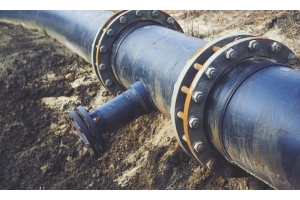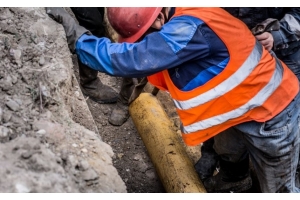How to Measure Pipe and Fitting Sizes


Accurate measurements are crucial to a successful project. Make sure you have the right supplies with this guide on how to measure pipe size and pipe fittings. Understanding pipe fitting size is essential when gathering supplies for installation or repair
The success of any project hinges on having the right supplies on hand. When it comes to pipes and fittings, finding the right size is essential, but it can also be confusing. If you’re gathering supplies for a project, take care to find accurate sizes. You don’t want to get halfway through your work to realize that certain pieces don’t fit together. Learning how to measure pipe and fitting sizes isn’t as straightforward as you might want it to be, but it doesn’t have to be a headache, either. Find the right equipment for your next installation or repair with this guide. Refer to our collection of pipe specification resources for further assistance.
Nominal Sizes vs. Actual Dimensions
The element that trips most people up is the term pipe size. Instead of referring to the actual measurements of your pipe or fitting, pipe size refers to the nominal size, or nominal diameter, of the pipe. When you measure the pipe itself, you don’t take both the inner and outer diameters into consideration. Furthermore, these diameters can change depending on the material thickness of the pipe. For example, two different ¾ inch pipes might have varying inner and outer diameters because they have varying wall thicknesses. That’s why nominal size is a key part of how to measure pipe and fitting sizes .
How to Measure Nominal Pipe Size Accurately?
A number of different factors and measurements can help you determine the nominal size of your pipe, including outside diameter, threads per inch, or circumference. To get a truly accurate reading of the pipe size, you should measure both the threads per inch and the outside diameter (or inside diameter if it’s a female pipe thread). For male pipe threads, be sure to measure the outside diameter at the widest point of the threads. For female pipe threads, measure the inside diameter at the widest point of the threads. You can then use these measurements to find the right size in a nominal pipe size conversion chart .
How To Find The Right Pipe Fitting Size?
Finding the right pipe fitting can also be confusing. You need a fitting that has an inside diameter large enough to fit around your pipe. Knowing the nominal size of your pipe will help you find accurate fittings. When purchasing fittings, take care to make your decision based on this nominal size rather than the outer or inner diameter of the pipe.
Knowing the ins and outs of your equipment is the first step to a successful piping project. The second step is to buy quality pipe stopples and other equipment from Petersen Products. We have the resources and information you need to find tools and supplies that you can rely on, so explore our website or call us to find what you need today.
The information may be used but with no warranty or liability. This information is believed to be correct but should always be double checked with alternative sources. Strictly adhere to and follow all applicable national and local regulations and practices.






